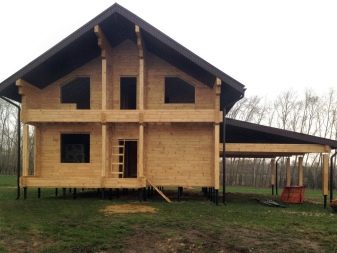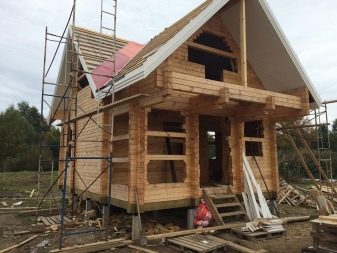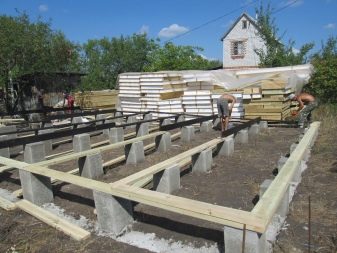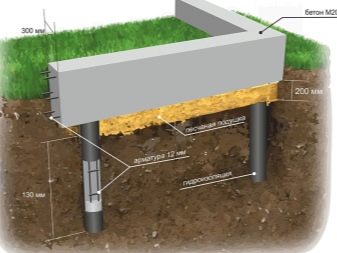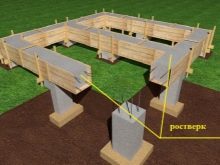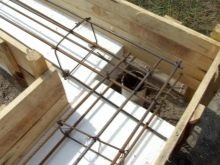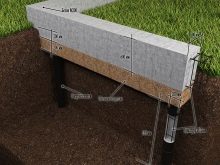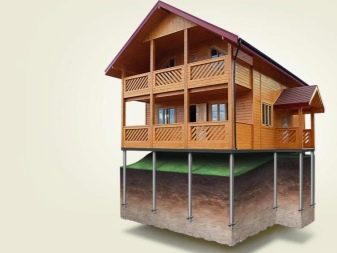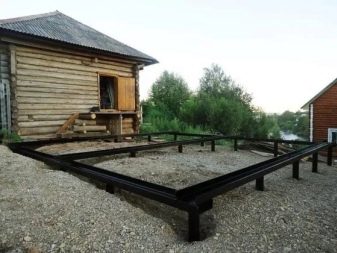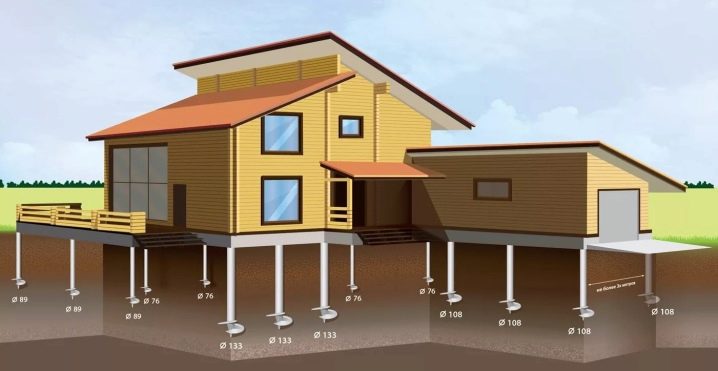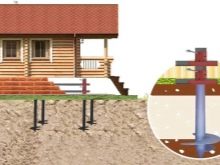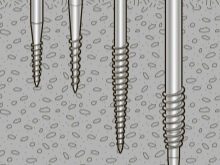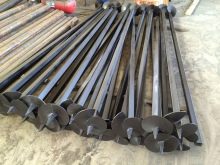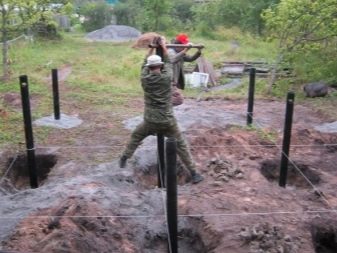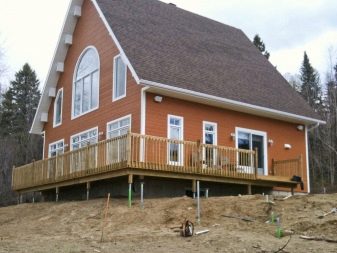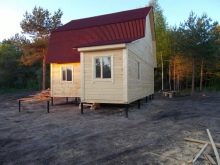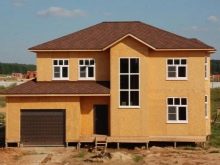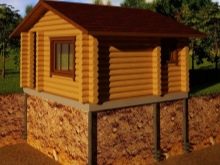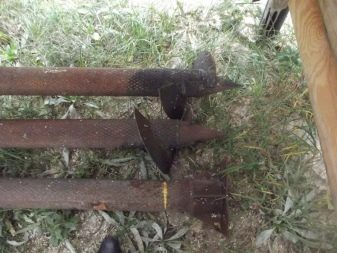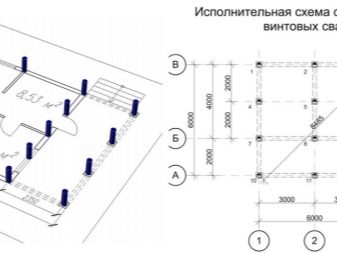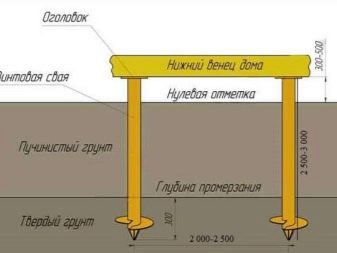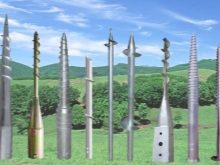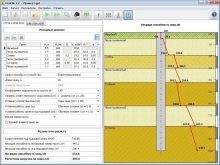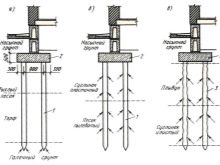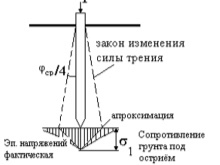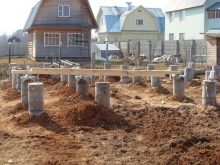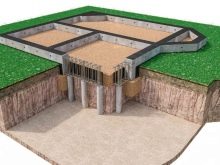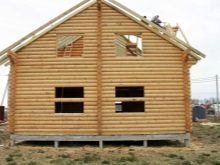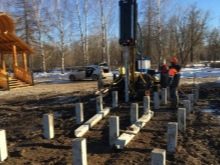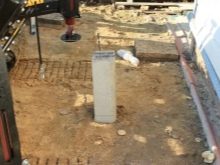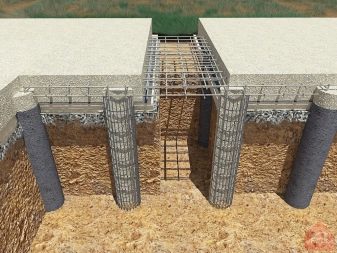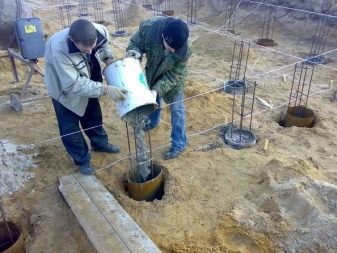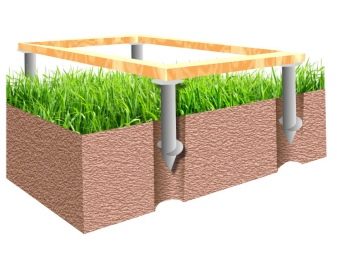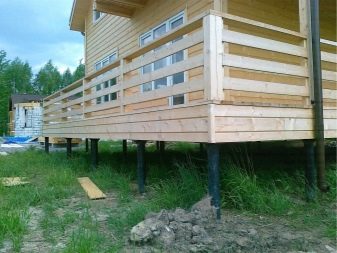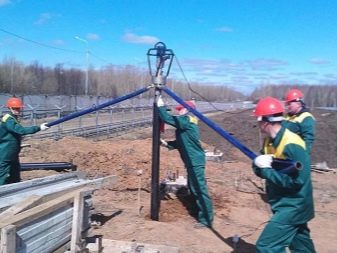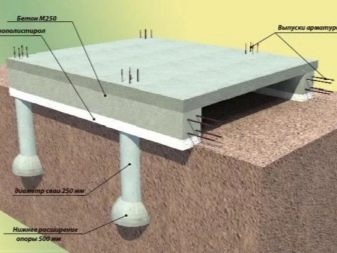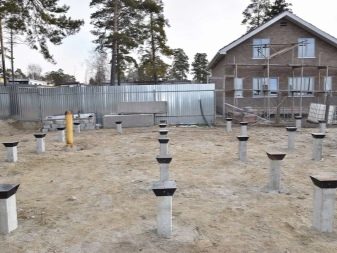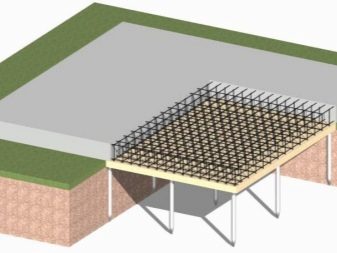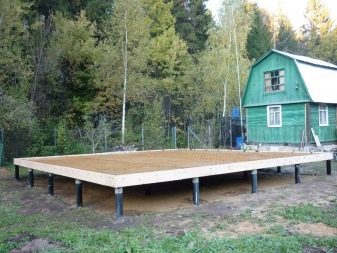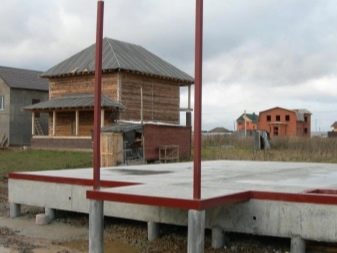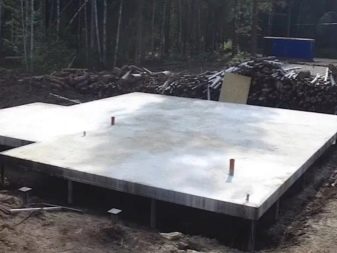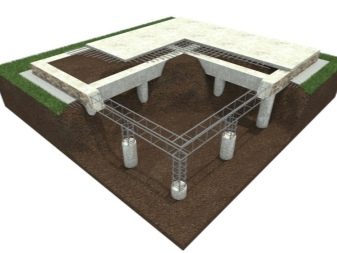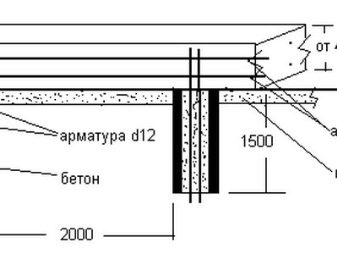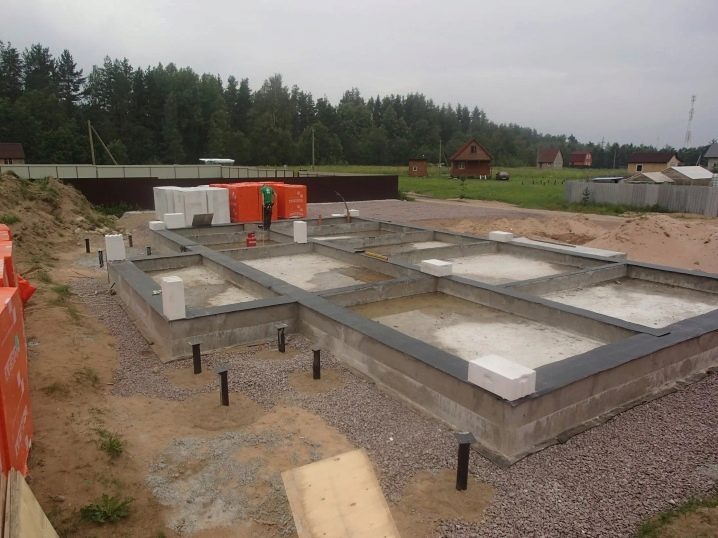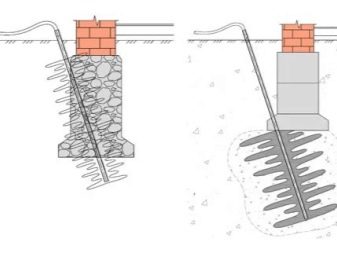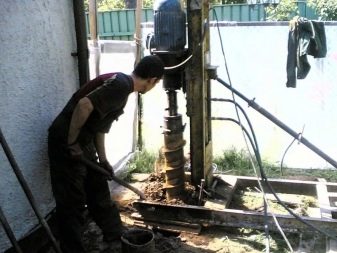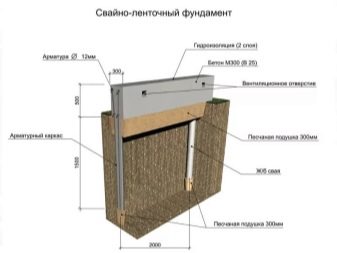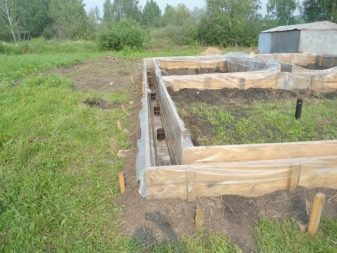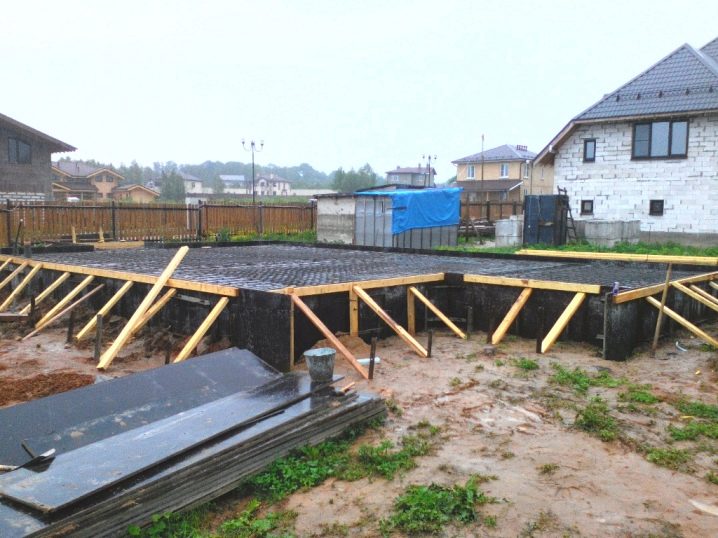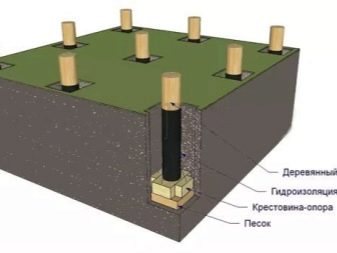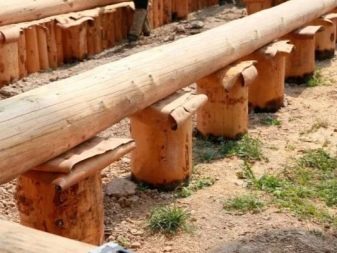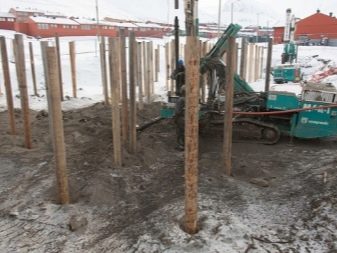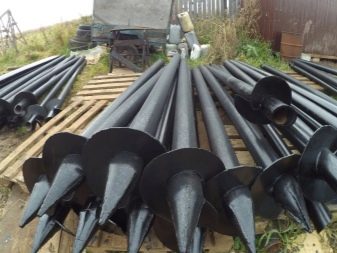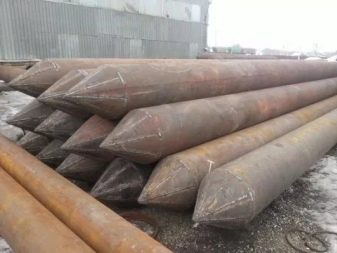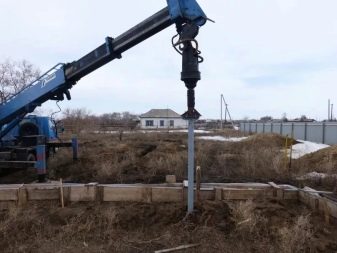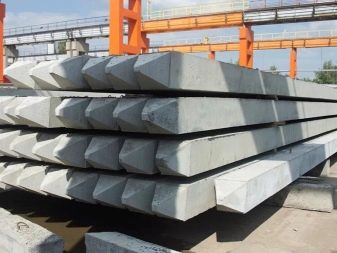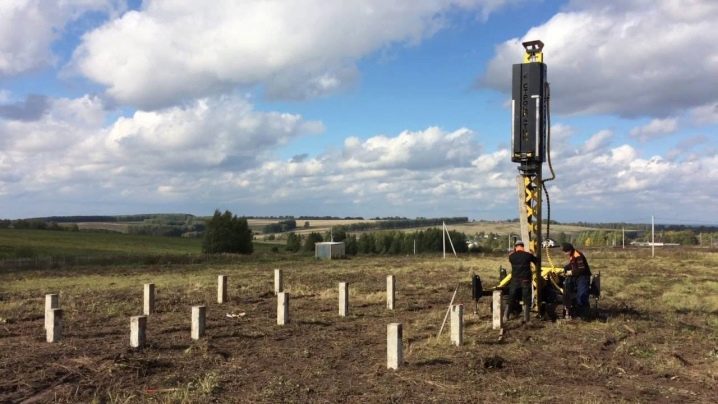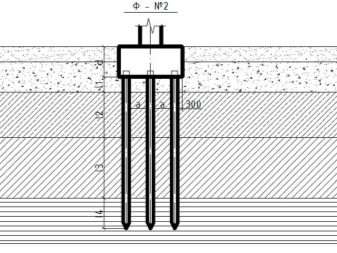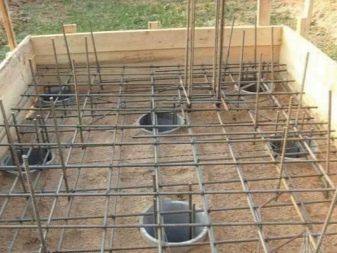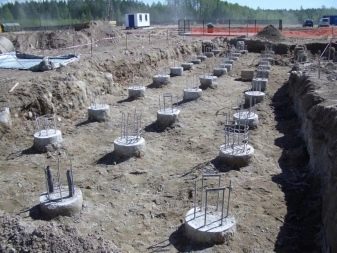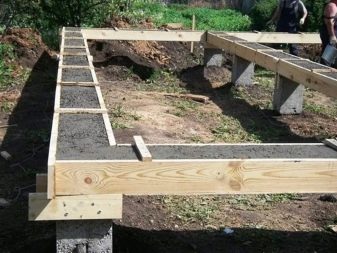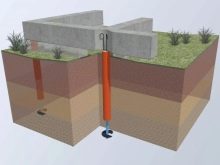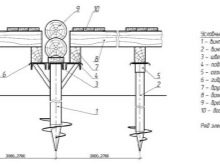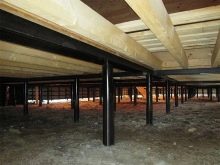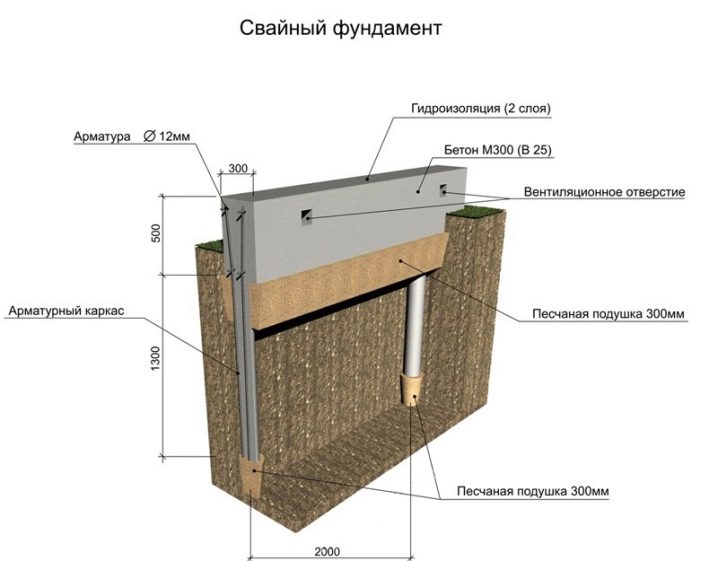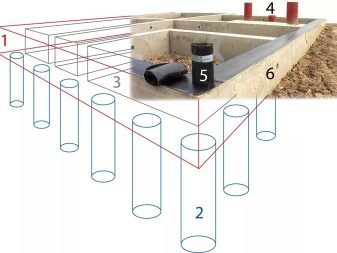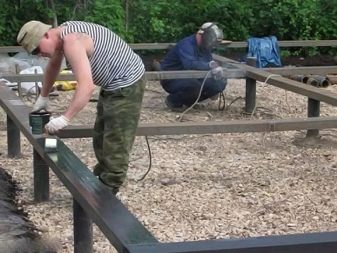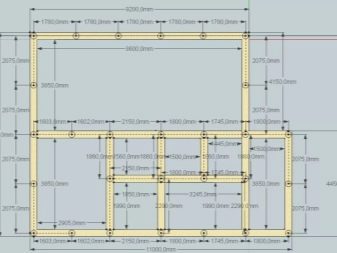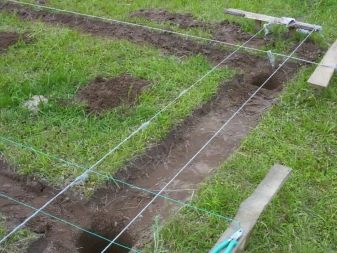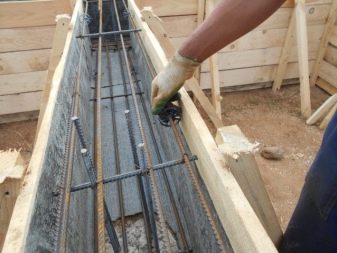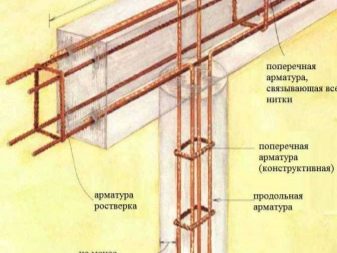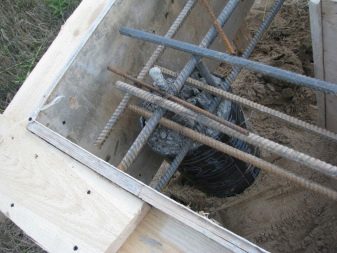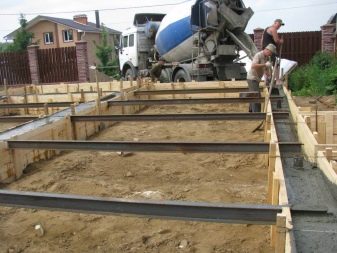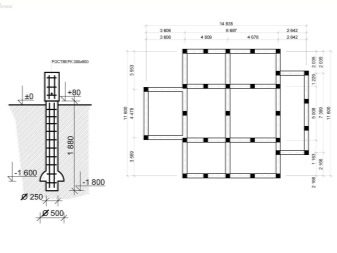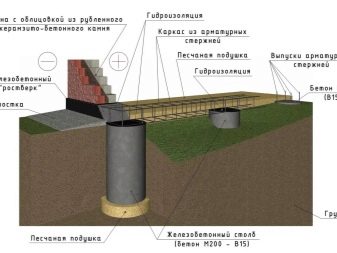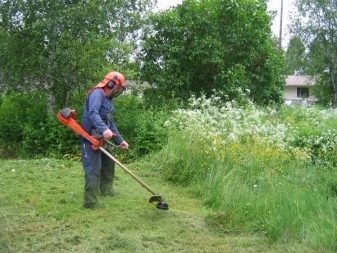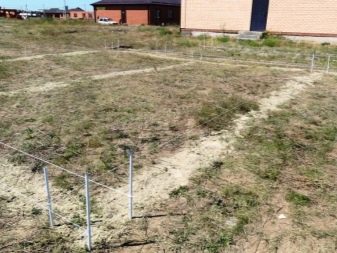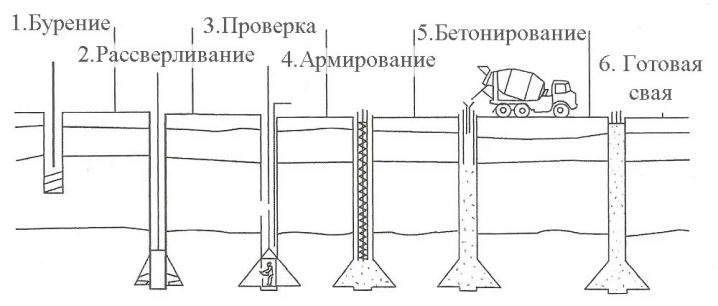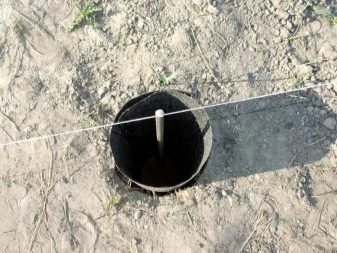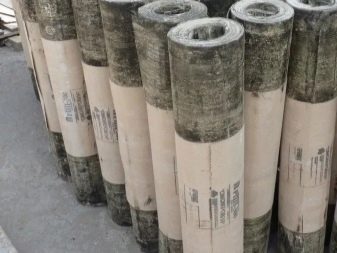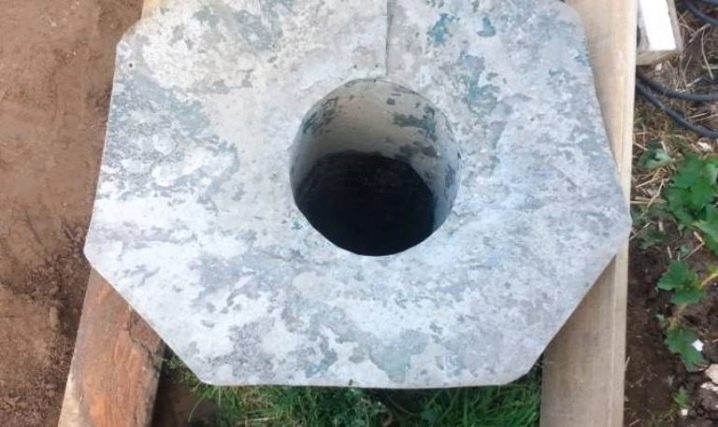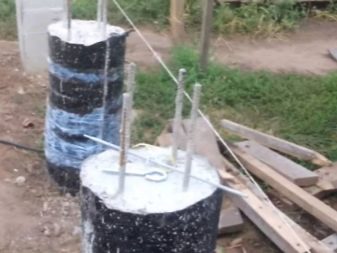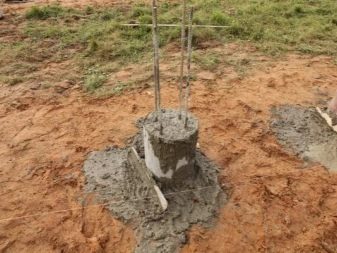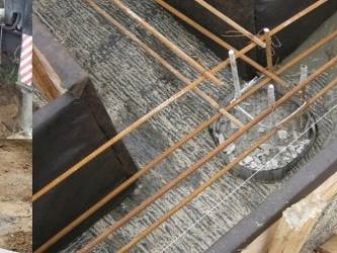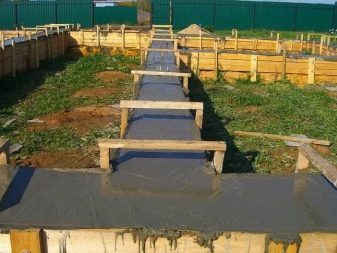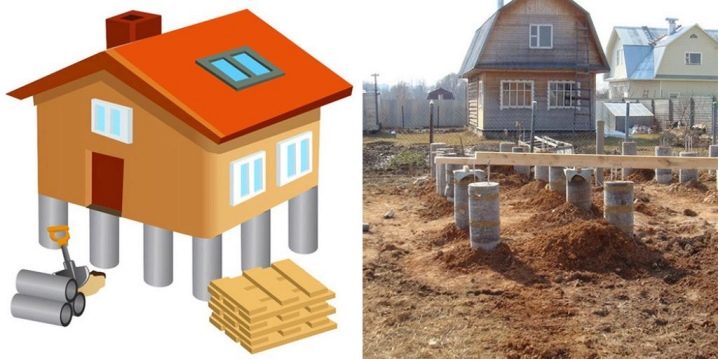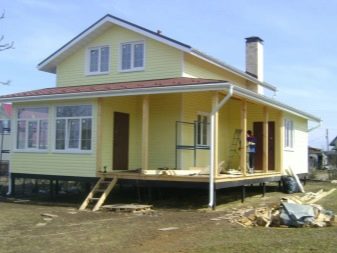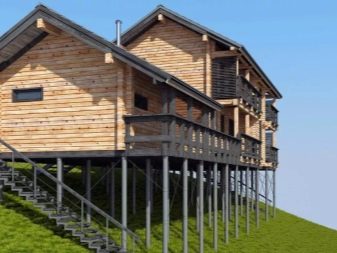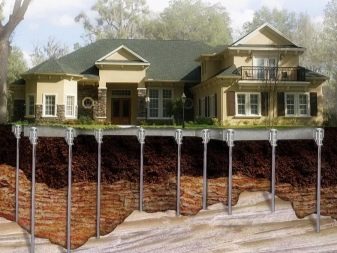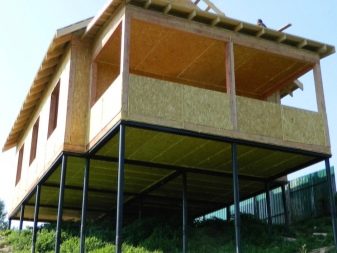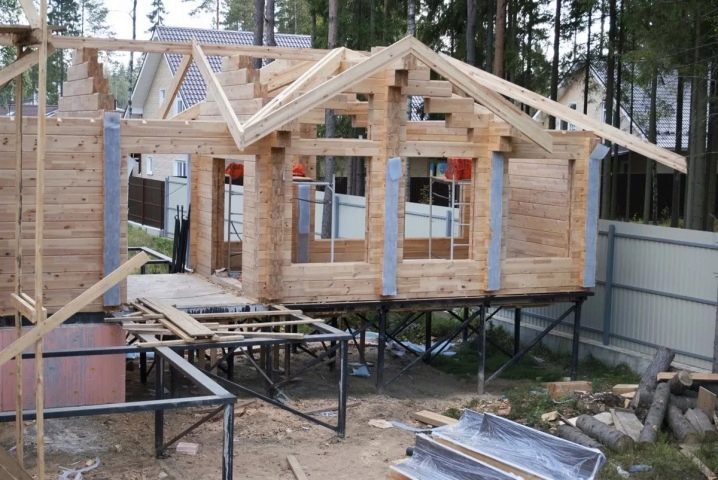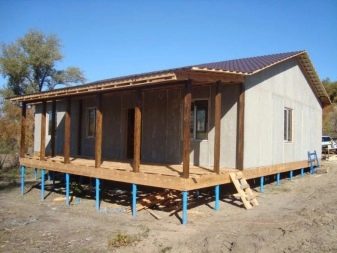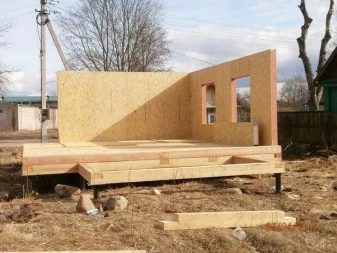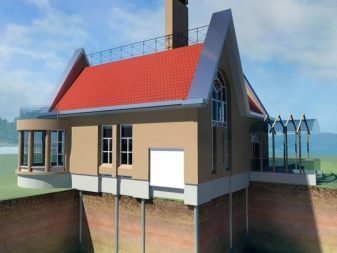Pile foundation: features, pros and cons of construction, installation
The foundation is an important component of most buildings. The life and reliability of the house or an outhouse will depend on such a foundation. There are several variations of the foundations - from a simple belt to a strong pile. We will take a closer look at the latter by highlighting its pros and cons, as well as the nuances associated with the installation work.
What it is?
Before proceeding to a detailed acquaintance with the pile foundation, you need to find out what it is.
This foundation is a pile, immersed in the ground. These parts are connected to each other with reinforced concrete beams or slab. In its pure form, such a foundation is not very common.This is explained by the fact that it has a peculiar design that does not allow to distribute the load emanating from the house between the piles. As a rule, the pile foundation is erected during the construction of log or lumber constructions. It is permissible to refer to such a basis in the construction of frame houses.
Today there is a more practical version of the pile foundation with a grillage. Such a foundation is devoid of many minuses inherent in conventional pile erections.
It can be accessed during the construction of brick or block houses. In such structures, all the supports are connected with each other using a special metal tape or concrete. This tape is called a grillage.
Special features
As mentioned earlier, the foundation is one of the most important components in the construction of a private house or an outhouse. The pile foundation is reliable enough, the main thing is to choose the right variation for it so that your house has a strong support under it.
It is recommended to apply to such a basis if your house is located in an area with a predominance of weak, floating or slightly flooded soil.
So, to the weak types of soil include:
- loam, clay in a fluid state;
- special loess soils that contain a lot of dust particles and a small amount of clay / limestone elements;
- sandy-clay soil types that are characterized by high water saturation;
- soil with impurities.
In addition, the pile foundation will be an excellent solution in conditions of deep bedding of solid soils.
A distinctive feature of the pile foundation is the fact that it is more economical when compared with the foundations of small burial. This results from the fact that for a basis with piles it is not necessary to dig a large ditch previously. This is especially true when it comes to building small houses that have a modest weight.
The main elements of the foundation of the pile type are special strong rods that go directly into the ground. These details are called piles. They are designed to evenly distribute all exerted loads on the ground. A characteristic difference is such a component as a grillage, which is a beam, a tape base or a slab. These parts are designed to increase the design load on the structure with piles.
The pile foundation is also distinguished by the fact that not so much time is usually spent on its construction. It does not require large labor costs. For example, for the installation of a 3-meter pile with a diameter of 30 cm, you only need to dig 20 cubic meters. see land. For this you can use a drill. It should be noted that today there are several variations of pile foundations. Of course, the most common are simple and grillage options.
Piles for such foundation bases are made of different materials. It can be wood, and metal, and reinforced concrete. The choice of the optimal raw material depends on the loads that will be produced on the base. The choice of a suitable material is also influenced by the possibility of using one or another technology, the geological features of the region in which the building is made, as well as the nature and features of the future home.
Structures with piles are used not only in private, but also in industrial construction. Such fundamentals are distinguished by the reduction of work on the construction of basement houses. There are cases when these processes are completely excluded. Today, the foundation of the pile type is most often used in the construction of cottages, as well as country and country houses.
Advantages and disadvantages
Despite not the greatest prevalence, pile foundations have many positive qualities.
If you decide to build such a foundation for the house, then you should familiarize yourself with them.
- The main advantage of the pile foundation, which is noted by many masters, is the speed of its construction. It will take very little time.
- Such structures can be erected on problem and weak soils. Not every type of foundation is suitable for such soils, so a pile foundation in such conditions is an ideal option.
- For the construction of the foundation on piles do not need to carry out a lot of land work. You do not have to dig a pit.
- This kind of foundation is bypassed inexpensively, which also attracts many users planning to build a house.
- Having a pile basis, you can do additional extensions to the house. If over time you want to expand the area of the dwelling or combine it with other constructions (for example, with a garage or a bath), then you can easily connect them with the same foundation.
- The weight of the house is evenly distributed on pile support.
- Installation of such bases is quite simple, especially if you compare it with monolithic or simple tape options. For such an erection it is not necessary to contact the specialists - you can handle all the work yourself, based on simple instructions.
- Such bases are distinguished by durability. Their service life is more than 30 years. Of course, if you carry out all the work correctly and use high-quality materials, this period may be much longer.
- Such a foundation can be built not only for private houses and cottages, but also greenhouses, bathhouses and other outbuildings.
- If you did everything correctly, over time the pile will not shrink.
- Before direct installation of the piles, it is not necessary to prepare the ground - to clean up the garbage or to remove the top layer of soil (except for concrete piles). Thanks to this feature, it takes a little time to build the foundation.
- Piles can be reused. In addition, they are easily replaced if necessary.
- To build this type of foundation is permissible at any time of the year.
As you can see, the pile foundation structures have a lot of positive aspects.However, such fundamentals are not perfect.
Let's get acquainted with the list of flaws that belong to the foundations on piles:
- If you used metal piles, they need to provide a high-quality protective layer. Otherwise, these parts may corrode, and it will take very little time.
- In the conditions of rocky places to build such a foundation simply will not succeed.
- According to experts, when building such a foundation, some problems may arise if other buildings are located nearby.
- If you are going to build a similar base, then you will need to make the most accurate and scrupulous calculations of the depth of the supports.
- Drafting a project for such a foundation may require considerable investments.
- When using concrete supports, it is important to consider their impressive weight. Because of this, the installation process can be significantly complicated.
- Piles made by the artisanal method cannot be used in the construction of such a foundation, despite their attractive cost. Otherwise, the design may not last very long and cause a lot of inconvenience.
Standards
As with the construction of any other types of foundations, it is necessary to mount the foundation on piles in accordance with the requirements listed in the relevant SNiP 2.02.03-85.
This document covers the joint venture (set of rules), as well as all the necessary information regarding the construction of a pile foundation:
- types of piles that can be used in the construction of the foundation;
- basic instructions regarding calculation;
- calculation of bearing capacity of pile supports;
- requirements for the installation of various types of pile supports (rammers, drilling, pile shells, piles filled with concrete and other types of supports);
- The document also includes an account of the negative forces of friction of the soil on the side of the piles;
- determination of bearing capacity of pile elements;
- construction of foundation bases on piles;
- design features in various types of soil.
In addition, the document contains a number of recommended applications., highlighting information on the definition of shrinkage of a single pile, strip foundations and other important calculations.
Experts advise to start building a pile foundation, based on the information contained in the SNiP.So you will produce not only a reliable and durable, but also a secure foundation that meets all requirements.
Kinds
The bases on stilts are different. The selection of a suitable construction should be approached very responsibly, since the reliability and durability of the future home will depend on the perfect choice. Let's get acquainted closer with the most popular types of such structures and examine their features.
Hammerhead
Printed foundation piles are common. As a rule, these are reinforced concrete rods that are driven deep into the ground. The installation of such structures is based on the most accurate calculations of the distribution of the entire load of the house on the supports themselves. Such piles are driven into the ground until they penetrate the most stable formation.
Such structures are often used in industrial construction. This is due to the fact that most often installation work on the installation of piles is carried out using special equipment. It should be borne in mind that such foundations can not always be used for the construction of ordinary houses or cottages, since it is simply unrealistic to install them yourself.
Bored
Before proceeding to the installation of a bored foundation, you must first drill a well. Piles will be installed in them, as well as concrete solution will be poured. Such installation works are most often used when building buildings of several floors.
Installation of bored piles is labor intensive. To proceed to such work, you first need to do a lot of complicated calculations. In addition, the cost of work can cost a pretty penny because of its complexity. These disadvantages repel many users from choosing such a fundamental foundation.
Screw
For suburban private houses and frame structures often choose just such grounds. Installation of screw piles can be done by hand. Moreover, this process will cost the master inexpensively and will not require a lot of effort.
Pipes from steel act as a basis for the screw base. These components have a screw thread. Because of this feature, the piles are screwed into the soil, and with the help of special blades they are firmly held in it. If the soil on the site is characterized by excessive looseness, then usually use screw piles with threads that stretch along the entire length of the pipe.Concrete is poured into steel elements to make the construction as strong, reliable and stable as possible.
The main advantage of this framework is the ease of its installation. For this you do not need to call a special technique.
For this reason, many people build their own types of foundations on their own. In addition, the pile-screw foundation can be installed in almost any type of soil. And to begin such work in any season.
Pile-plate (SPF)
The pile-slab foundation is a revolutionary development in the construction industry. At present, such structures are being constructed during the construction of multi-storey buildings of considerable weight.
This type of foundation consists of the following basic elements:
- grillage;
- high strength reinforced concrete piles, characterized by an increased level of resistance.
Plate type of foundation with piles is simply necessary in such cases:
- if you are building a house (or an outhouse) on weak bulk soils;
- if there is a tight junction to the bases already present in the area;
- if the construction of the house is planned in an area with high seismic activity;
- if we are talking about building land with bad geology.
The main distinguishing characteristic of such a framework is that it has the highest level of strength, which is very important for the foundation. Buildings that are built on a similar construction serve for many years and are not afraid of negative external influences. Mostly, such foundations do not fear vibration loads.
It should be borne in mind that for the installation of such a foundation, you must first prepare a place. Only after that proceed to the immediate pile driving and pouring the plate.
Monolithic with grillage
As mentioned above, the distinctive feature of the pile foundation is that with it the entire load from the house built is laid on the piles. Often these parts are combined with a grillage. There is a monolithic grillage, which is the upper area of the pile foundation, performing the function of dislocating the load from the bearing elements of the structure.
Monolithic pile foundation with grillage has the following advantages:
- it is possible to equip it on different types of soil (except magmatic and sedimentary soil);
- when it is erected for land works, the minimum amount of time is spent;
- molding of this type of foundation is allowed to be done even in low temperature conditions;
- similar bases have excellent bearing capacity;
- the construction of such a framework is inexpensive.
The disadvantages of monolithic structures with a grillage include the fact that they cannot be mounted without special equipment and tools. In addition, during their construction, the owners will have to abandon the preparation of a warmed basement.
Brown injection
Today, for the construction of reliable and stable foundations are often used injecting types of piles. Similar details belong to the class of stuffed supports. They are made by drilling and further filling them with cement-sand or water-cement mixture using injection technology. To further strengthen the bearing capacity, such types of piles are often reinforced with iron pipes, reinforcing bars or reinforced frames. These elements are fixed in the borehole with a special metal construction in the form of a cylinder or a prism.
Brown injection piles are divided into the following types:
- piles-racks - these parts are installed as deep as possible into the underlying layers of hard rock, while transferring the main load through the heel;
- hanging piles - such elements are mounted on the ground without a strong bearing layer and transfer the load to the ground with a side surface.
Pile and belt
Pile and strip foundation is one of the varieties of monolithic structures for heaving and weak soil types. The main feature of such a foundation is that with it the walls of the house will rest around the perimeter on a solid foundation with a slight deepening. As for reliable adhesion with solid layers of soil, in this case it will be achieved thanks to piles installed below the freezing point.
Pile and strip foundation is good because it does not require large expenditures, it is built quickly and perfectly resists heaving as well as seasonal soil movements. The disadvantage of this design is that when it is not possible to equip a full basement room. In addition, you need to take into account the fact that on such a foundation it will be impossible to build buildings with heavy walls.
You can make such a structure yourself.According to experts, even a novice can handle such work.
Pile foundations differ not only in their structure, but also in the materials from which piles are made. Let us consider in detail what the distinctive characteristics of structures from different raw materials.
Materials for the manufacture of piles
Wood
Supports for pile foundations are often made from wood. Usually such species as spruce and pine are used for this. Slightly less expensive options are found of larch, oak and cedar.
It should be borne in mind that, although wooden piles are pliable and easy to install, they are permissible only if we are talking about the structure of a small weight. For example, it can be various kinds of outbuildings or wooden houses. The main advantage of wood for the foundation is that it is easy to process. In addition, similar material in many regions is considered affordable both in terms of prevalence.
However, foundation piles from this environmentally friendly material also have serious disadvantages. For example, they cannot boast of good strength characteristics, which is why they cannot be used in the construction of large residential buildings.Also, the tree is prone to rotting, even if it is treated with a protective agent. Because of these minuses, wooden piles are used very rarely today.
The wooden pile should have a diameter of at least 180 mm. The maximum length of all-stem parts usually does not exceed the mark of 16 m. If a longer element is required when building the foundation, then several trunks are specially spliced. As a result, the pile becomes longer and can reach 25 m.
Steel
Steel piles can have a different configuration. The most common elements are a seamless tube, which has walls with a thickness of 8-12 mm. Also supports of special box-section can be applied. Similar parts are made from I-beam.
To increase the bearing capacity, steel piles after installation work are often poured with concrete. Due to this, these parts become more stable and reliable.
Special screw piles are also made of steel. These products are quite popular nowadays, as they are easy to install and serve for many years. Screw piles look like large drills or simple auger-coated pipes.
Steel piles, which have a large diameter, are screwed with special equipment, such as capstans. However, supporting elements with a diameter of 100 mm can be put into place without the involvement of sophisticated equipment. Two people can handle this using a gate.
Foundations assembled from steel piles are rightly recognized as one of the strongest and most durable. Such structures are not subject to deformation. However, they are expensive, and over time they are exposed to rust, which adversely affects the quality of steel.
Reinforced concrete
Reinforced concrete types of foundation piles are the most common and popular today. Such details are recognized as the most practical, if we consider them from the point of view of private construction. This results from the fact that it is possible to make a support of practically any required diameter directly in the soil from reinforced concrete, without using complex specialized equipment.
Reinforced concrete piles can be purchased in ready-made form. In this case, they, as a rule, have a square or rectangular section.Today there are also screw supports made of reinforced concrete.
In the course of screwing in such parts, a strong metal core is put, which at the end of the installation work is taken out for screwing into the remaining pores.
Concrete piles are hollow and solid.
Specifications
The depth of the pile foundation depends on the distance at which the more durable layer of soil is located. According to the statements of professional geologists, this layer can easily withstand the load created by the constructed building.
Foundations on stilts have a wide range of uses. These structures can be equipped in any soils (except rocky) and climatic zones. Due to this, masters consider such constructions universal.
It is permissible to mount the foundation with piles in the winter season, however, experts still recommend waiting for warming before starting repair work.
As for the height of the foundation on the supports, it directly depends on the soil and other parameters: personal preferences of the owners, the presence of flowing water, and the specific climatic zone.
The load that influences the pile foundation is divided into “squares”, so it is very important to do all the necessary calculations correctly. To do this, it is recommended to contact the experts.
Device subtleties
Before turning to the independent construction of a high-quality foundation on piles, it is necessary to consider in detail how it is arranged. Such a structure is a kind of support under the house (cottage, outhouse, multi-storey building), which consists of separately arranged pile supports or a special pile field.
Most often, people choose high-strength and durable elements from such a material as reinforced concrete. However, you can also use non-reinforced concrete and butobeton (and other materials), which are cheaper and generally reduce the cost of erecting the entire structure. To make concrete more durable, and also to save it, it is necessary to reinforce the foundation structure on piles. As the reinforcement most commonly used steel rods with a smooth surface or profiled parts. Foundation piles are always fixed at the corners of the future construction at the intersections of the internal bearing partitions with each other and with external ceilings.
If between the obligatory piles there is a distance of 2 to 2.5 m (and sometimes more), then intermediate elements are mounted between them to close the protals.
The entire structure usually consists of a sand pad, a reinforcement cage, a concrete layer with ventilation holes, and a waterproofing layer.
Independent production
Most varieties of pile foundation can be made by hand. To do this, you must strictly follow the step by step instructions and use only high-quality materials / tools. Keep in mind that none of the stages of work can not be neglected, otherwise the result may disappoint you.
Let us consider in more detail a step-by-step guide for the construction of the foundation on piles using the example of a popular pile-and-pile structure.
Stages of work:
- First you need to make a project / drawing of the future construction and carry out all the necessary calculations. To make high-quality and accurate design, it is recommended to contact specialists.
- First, it should be divided into squares plot, which is planned to build the foundation and the house itself.To do this, you need to level the existing terrain, and also it is desirable to remove a layer of excess soil in order to level the field for further repairs.
- In the course of these works, the outer perimeter of the building should be delimited with the help of small wooden pegs and building laces stretched between them. In addition, with the help of these elements need to note the dimensions of the trench, which is required for the grillage.
- After that, under the tape should dig a trench. To do this, you can contact the help of special equipment or carry out such work manually.
- The depth and width of the excavated trench should be determined taking into account engineering calculation. Also, you need to take into account the formwork and backfilling of the soil. At this stage, the presence and level of the depth of the pit, intended for the basement or a special technical structure, is revealed.
- The next step is to drill wells for the installation of pile supports. Depending on the specific type of pile in the ground, make the appropriate holes. Sometimes they need additional compaction at the bottom, and sometimes vice versa, of a more modest size, as in the situation with driving structures. It is necessary to adhere to the step in accordance with the accepted calculation of the load.
- Immersing the piles into the prepared grooves is done either manually or using special equipment. At this stage, you should consider the presence of a basement or technical room, located below the zero floor of the house.
- If you are using pipes in the role of piles, then their external partitions should be waterproofed using bitumen mastic or roofing material. As for the internal cavity of these parts, it is usually subjected to reinforcement, and then poured concrete mix.
- This is followed by fixing the reinforced frame, designed for the grillage. To provide a more robust and reliable mount, it is mated with fittings protruding from the racks. After that, the frame is tightly fixed inside the trench, using a soft knitting wire. Note that the frame should in no case come into contact with the bottom of the excavated trench and leave its limits from the outside.
- Now you need to build a formwork for the grillage. This process should be carried out in the same way as in the case of a simple strip foundation - it will be necessary to fix the formwork boards at the edges of the trench.
- The walls of wood panels should be covered with special plastic tape.With such detail, formwork will last much longer and will not be subject to negative external influence.
- The next step is concreting. This work can be started only after all the required preparations. Experts recommend using for this concrete, which is produced in specialized factories, adhering to clear proportions. Usually such materials are delivered to the construction site by special automixers. Using sleeves or gutters, the solution is poured into the prepared tape in one approach. At the same time it is necessary to carry out tamping of concrete with the help of special vibroapparatus.
- The next step will be the dismantling of the wooden formwork and backfilling. It is possible to remove wooden shields from the trench only in a few days (not earlier).
- The last step in the foundation work is the backfilling of the soil.
As you can see, for the construction of this kind of pile foundations do not need to have special education or rich experience. You can carry out all the stages on your own - there is nothing extremely difficult in this. The main thing is to follow the instructions and responsibly treat the case.
Of course, if certain doubts have crept into you that you can prepare a similar basis for building a house yourself, then it is better to entrust these works to professionals.
Bored
Let us analyze step by step the process of installing another kind of pile foundation - bored. Note that the diameter of the drill required to carry out such work should be not less than 25 cm. It is desirable that the handle be intact, so that you can make it at any second slightly longer or shorter.
The first step in the installation of bored piles will be a scrupulous preparation, but you need to start it not from the site itself, but from the scheme / project on paper. It is possible to take a territorial plan and apply it on a separate sheet at the right scale. Mark the exact dimensions of the future design in the drawing. Calculate the number of piles and determine their location, based on the weight of the future construction.
Having made all the necessary calculations and having determined all the necessary parameters, you can proceed to the preparatory work on the foundation construction site. To do this, from the construction site you need to remove any grass and other vegetation.
Next, you need to mark the site. To do this, pegs are hammered at specific points of the future construction. It is very important to take into account the gap between the centers of the pile supports - it will be leveled to the total length of the wall, from which the width of the wall will be subtracted. Arrange the pegs in the corners, you need to measure the diagonal. If they are not the same, then 1 or more angles are made incorrectly.
After correctly placing all the necessary points between the pegs, you should tighten the special construction cord, as is the case with the screw foundation. The gap from one rope to another must be equal to the diameter of the piles that you will install. This must be done so that all foundation piles can be set up as simply and quickly as possible.
Having completed the preparatory work, you can proceed directly to the construction of the pile foundation itself. For this purpose, drilling of the recesses intended for bored pile bearings in the points allocated for them is first carried out. The drill must be positioned clearly in the center of the future hole so as not to interfere with the displacement of the supports. To make the notches, you can use a drill, which has the function of increasing the length if necessary.However, this solution has a drawback - in the case of manual drilling, you will have to expend quite a lot of effort, especially if you are working in clayey conditions. However, using such equipment, you do not have to turn to the help of special equipment.
From time to time the drill will need to be lifted from the hole in order to clear it from the ground. If the drilling process is difficult, then it is better to stock up with the assistant’s earnings. It is necessary to drill depressions under supports to a depth that would be higher than the level of soil freezing. In this case, you can not worry about the stability of the structure with temperature changes.
For trouble-free control of the depth to which the pile structure will be placed, it is possible to put a marking on the drill handle. Having completed the preparation of recesses for pile support, you should proceed to waterproofing structures. Since the soil keeps its shape well, the installation of additional formwork in this case is not useful. Instead of a similar construction, it is permissible to use a roofing material of a suitable grade - RCP-350.
For easier placement of roofing material in the inner part of the wells, strengthening, as well as future pouring of concrete solution there,need to make a pipe. It is possible to do this from plywood circles corresponding to the diameter of the wells made.
Manufactured plywood unit should be lowered into the completed wells and properly fixed. To do this, you can make your own device with a funnel and small sides. Plywood detail will enable the ruberoid to securely hold in the right place. In addition, this detail will make it easier to pour concrete for piles. Note that in the future, pouring the solution should occur to the very top of the adapter. When the concrete reaches the desired point, the adapter can be removed and placed in the next recess.
It is very important to pour not only the underground part of the foundation piles, but also their upper module. Place it vertically. To achieve this, it is necessary to prepare a restrictive structure of two strips, which must be installed at a distance corresponding to the diameter of pile supports +1 cm. This component will provide a gap of 5 cm from all sides.
Having made such a restrictive design, it is necessary to measure an equal distance from the center of the well into 2 other sides in order to correctly put the formwork for the upper half.Please note that in the plywood frame plays an important role hole that is located at the top. It should coincide with the center of the well.
Next, you need an iron bar. A plumb line is hung on its middle and is placed clearly above the center of the hole in the round timber of the plywood frame. In this position, measure the radius of the pile in 2 directions from the rod. Add to the size of 5 mm. Next, screw on the desired point 2 wooden parts that will hold the formwork and prepare a solution of concrete.
Prepare for each support frame made of metal. Note that its length should cover both the inner and outer half of the support and have a gap for dressing with fixtures fixed in a concrete grillage. Lay a concrete layer of at least 10 cm into the well under the piles. So you will save the reinforcement from corrosion.
After placing the reinforcement fill the groove is not very thick concrete mix. The filling needs to be done until you reach the top of the hole. Next you should use a special in-depth vibrator to remove air pockets.
Next, put the top formwork of the folded roofing material.It must be securely fastened so that it holds the concrete. At the same time, a grid of steel wrapped around a layer of roofing material is used. Next, the pile support is completely filled with concrete. Note that before installing the upper formwork, remove the metal stand that attached the roofing material to the bottom.
Fully filling the recess, you need to very carefully use a vibrator, as in the case of a poor connected metal mesh, the integrity of the structure can be broken. Before pouring the grillage, you need to wait a bit to make the piles more durable. Next around the piles need to build a formwork of wood or plywood.
Put a layer of waterproofing material in the formwork to make the shields easier to dismantle. For this, it is recommended to use a high density polyethylene film or roofing material. In addition, the formwork is allowed to miss with mastic on a bitumen base. At the same time it is necessary to ensure that the concrete never oozes out of the formwork. Strengthen the formwork with studs, but this should be done after the installation of the metal frame for reinforcement.
The skeleton must be tied up with the construction coming from the pile supports.Then the bars coming out of the piles are bent and fixed to the wire. Only after this is allowed to proceed to the fill. It is better to do it in 1 time so that the foundation does not turn out to be multi-layered.
It is more difficult to make a similar type of basement than a tape one. In this case it is very important to use suitable tools, for example, a high-quality drill with a folding handle. In addition, it is important to lay a roofing material of a suitable grade, as well as concrete marked M300.
Useful tips
Many home masters are wondering if a blind area is needed when building the foundation on piles. The answer is simple: it is imperative that a residential structure on such a basis be qualitatively protected from the negative impact of precipitation and groundwater.
Such a design should have the following characteristics:
- a slope of 3-5 degrees, so that the part of the structure adjacent to the basement half of the house was slightly (about 3-5 cm) above the outer part of the blind area;
- 15-25 cm wide more than the size of the eaves of the building on the pile foundation;
- cushion thickness of 20-30 cm;
- 3-15 cm thick decorative layer, but you need to take into accountthat if you make a concrete structure, then its thickness should be about 13-15 cm, and if it is tiled or stone - 5-6 cm. In the case of asphalt, a thickness of 3-4 cm will suffice.
As mentioned earlier, wooden types of piles can only be used in the construction of lightweight structures. In addition, such details are suitable if there is a high level of groundwater in the area.
Note that steel supports can be reused. So, in the process of building a mobile building, such piles are not poured with concrete, and with further movement of the structure, they are pulled out to be fixed in a new place.
If you do not know which foundation is better to build under a light frame house, then you should refer to the screw pile foundation. In this case, this design will be the best solution.
Consider that when erecting a pile foundation, difficulties may arise due to certain restrictions:
- When it comes to horizontally mobile soil. This includes planting and swelling types of soil. To determine the type of land, you need to refer to the help of laboratory studies.
- When organizing a quality foundation on stilts, problems often arise with the erection of the basement. The distance between the supports is important to fill, as is the case with columnar bases. These works will require additional expenditure and effort.
At the end of the foundation work, the soil is backfilled. To do this, take the material, previously excavated from a trench or sand-gravel mixture, which must be additionally rammed. We should not forget that at this stage the additional warming of the foundation tape is usually carried out (if we are talking about a pile-tape foundation). Most often, for this purpose, apply polystyrene, planted on glue.
Experts recommend to purchase screw piles that were covered with a reliable anti-corrosion compound during the manufacturing process. Manufacturer's warranty on such items is 50 years, but in fact they last much longer.
Many consumers are wondering if the pile foundation is suitable for houses made of special CIP panels (CIP technology is a type of panel construction).For such buildings, you can build and pile, and tape, and column types of the foundation.
If your pile foundation has shrunk, then this suggests that it was erected incorrectly. In the case of well-executed installation work, such structures, as a rule, do not shrink.
If there is a ground on your site, which is subject to serious subsidence, then you should abandon the screw foundation, since in such conditions it may not be sufficiently stable and durable.
It is very important to correctly carry out all the necessary calculations for the independent construction of the pile foundation. To do this, calculate the mass of the future home, determine the reference area (based on weight and reliability coefficient), calculate the number of piles, select the area of their cross section, and then compare the results with the reference area.
For the construction of the foundation on piles, it is very important to acquire high-quality and reliable tools. It will be much easier to work with such devices. Do not save on materials such as roofing felt, concrete, insulation and waterproofing.
Do not undertake work on the independent construction of the pile foundation,if you doubt your abilities. It is better to contact a proven company in your city, whose masters will do everything for you. Such services are provided by many companies, for example, “SV-Foundation”, “Unix Story”, “SVF-Premium” and many others.
About pile foundations for one-story houses, see the following video.

